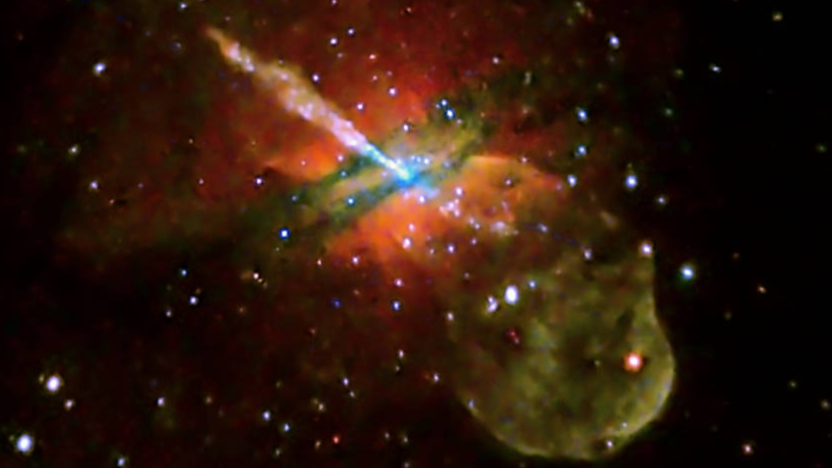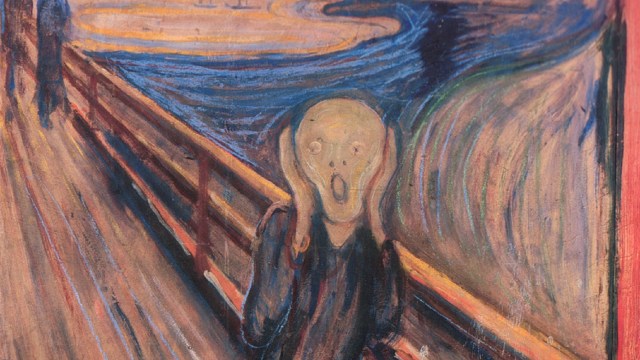Throwback Thursday: The Fundamental Limits Of Knowledge
Our observable Universe is finite, and so is the amount of information in it. Here’s what we may never know.
“Despite its name, the big bang theory is not really a theory of a bang at all. It is really only a theory of the aftermath of a bang.” –Alan Guth
So you finally understand what all the fuss is about when it comes to the origins of our Universe. The story you’ve heard has a name: the Big Bang. And the most important thing that the Big Bang tells us is that the Universe was hotter, denser, and expanding at a faster rate in the past.
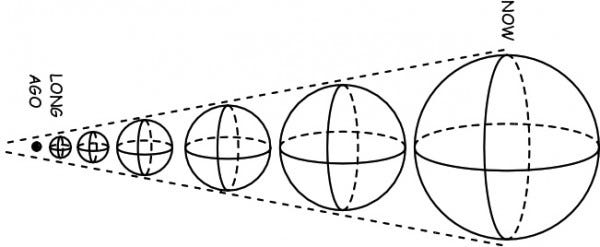
The farther back we go, the closer together everything was, the higher in temperature (and shorter in wavelength) all the radiation was, and — of course — the younger the Universe was.
We can go back farther and farther into the distant past, to a time where organic molecules didn’t exist, to where the heavy elements necessary to form them (and rocky planets) hadn’t come into existence, and even farther back to before even the first galaxies or stars had formed. If we go early enough, something very special happens.
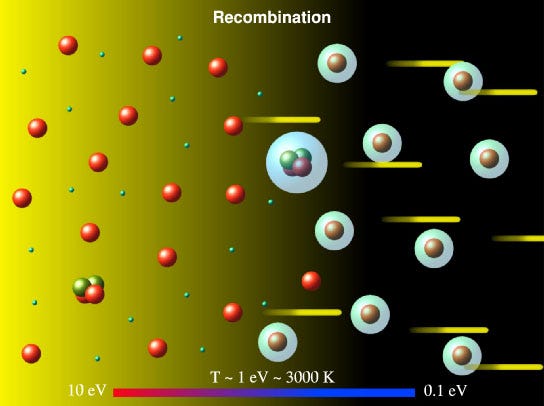
At some point, it was hot enough that neutral atoms couldn’t even form; as soon as an electron would find an atomic nucleus, a high-enough-energy photon would come along and ionize the atom’s constituents.
In fact, you can go back even farther, to when it was hotter and denser, and atomic nuclei themselves couldn’t form, creating just a sea of protons and neutrons, as any particle colliding with a nucleus would smash it apart into its individual baryons.

In an even hotter and denser state, protons and neutrons decompose into quarks and gluons, collisions at high enough energies will allow the spontaneous creation of equal amounts of matter and antimatter, and energy, temperature, density, and the expansion rate will all increase tremendously.
But not indefinitely; we can only go back a finite amount of time in the past, and that’s because what we consider “our Universe” didn’t begin from a singularity 13.8 billion years ago, but began when the previous stage — cosmic inflation — came to an end.
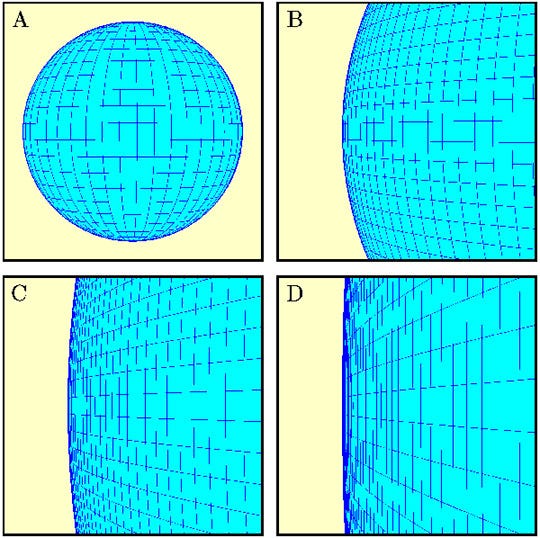
Inflation is a period of time where the Universe was expanding exponentially. Rather than being filled with matter, antimatter, radiation, and a teensy, tiny bit of energy inherent to space itself (today’s dark energy), the Universe’s energy content was completely dominated by energy inherent to space. Space was expanding exponentially, the quantum fluctuations that occur, which normally stay localized in our Universe today, are stretched out across the Universe, and cause the slight imperfections in energy density that permeate our observable Universe.
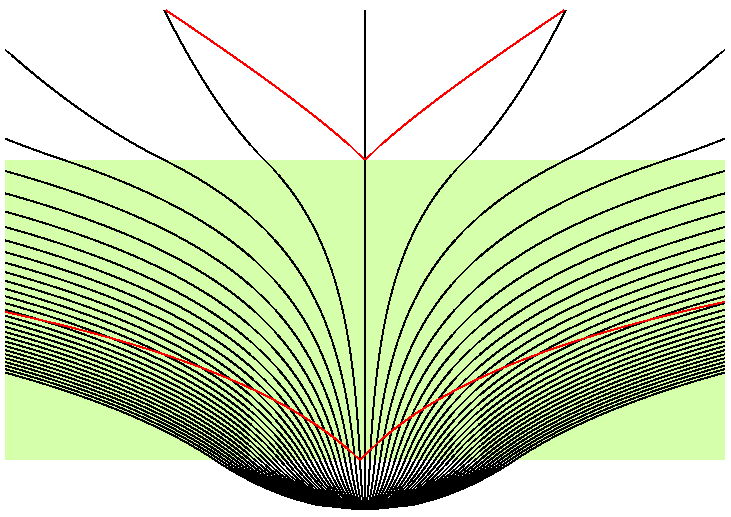
When inflation ended, that energy — through a process called reheating — was transferred from space into matter/antimatter/radiation, and that’s where the hot big bang comes from! The fluctuations gave rise to slight irregularities in the matter/antimatter/radiation density, and that’s where all the cosmic structure in the Universe — clusters, galaxies, stars, and us — came from.
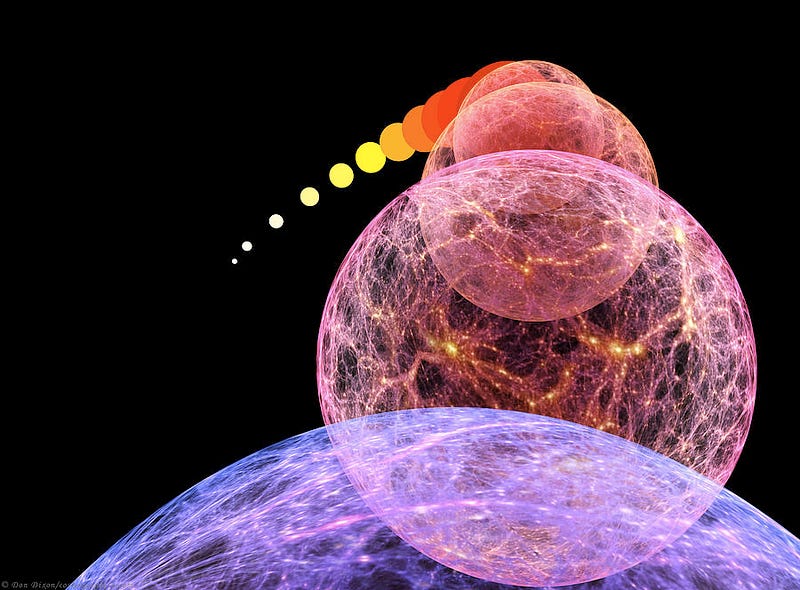
So, knowing that, let’s talk about how inflation works.
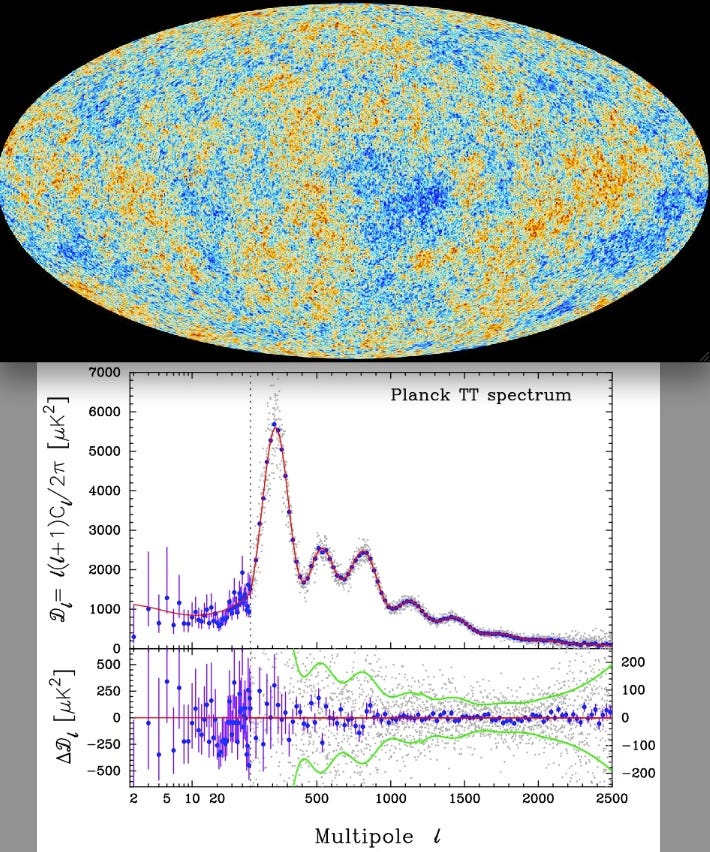
According to Planck, the satellite that measures the fluctuations in the cosmic microwave background, the simplest, slow-roll inflation models are the ones that are most favored by the data. I can represent inflation as a very specific type of hill: when you’re at the top of the hill, that’s when inflation occurs; when you roll down the hill into the valley, that’s when inflation ends, reheating occurs, and the hot big bang that begins our known Universe occurs.
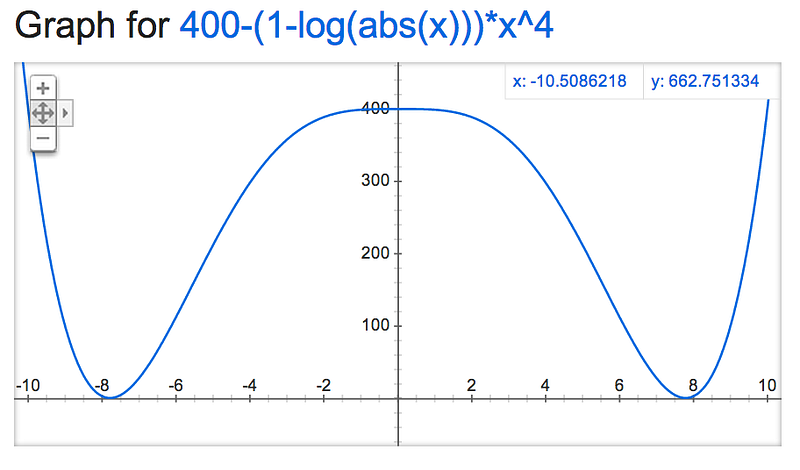
This type of graph represents the potential for the field that causes inflation. (The vertical axis is related to energy, the horizontal axis is arbitrary.) I will come right out and admit:
- We do not know whether the field is a true quantum field, in which case there should be a particle associated with it: the inflaton, which we haven’t discovered.
- Above, I have modeled inflation as a scalar field. It does not have to be a scalar field; it could be a spinor, vector, or tensor field, but we model it as a scalar for simplicity.
- There is no reason for the field to start at the flat part; in principle, it could have started anywhere. But in order for inflation to work, it needs to start out at the flat part.
In fact, in order for inflation to work properly, the central, flat part of this potential needs to be very flat.
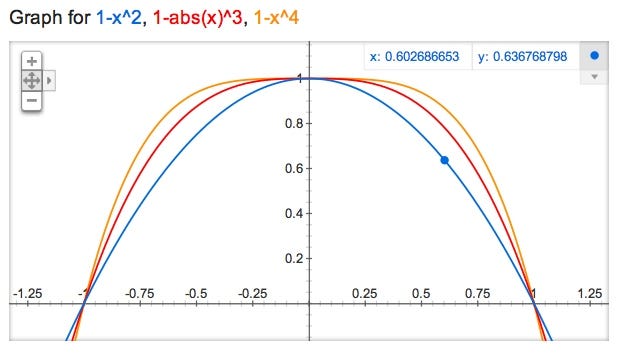
An upside-down parabola, show in blue, above, is not flat enough. Inflation needs enough time to stretch the Universe out — stretch it flat, stretch it so that it’s the same temperature everywhere, stretch it good — and only then can it roll down the hill, transfer the energy into matter/antimatter/radiation, and create the Universe as we know it!
Now, the evidence in our Universe — from looking at structure, but most convincingly from looking at the Planck data — tells us that either this exact thing (or something hitherto indistinguishable from it) actually happened.
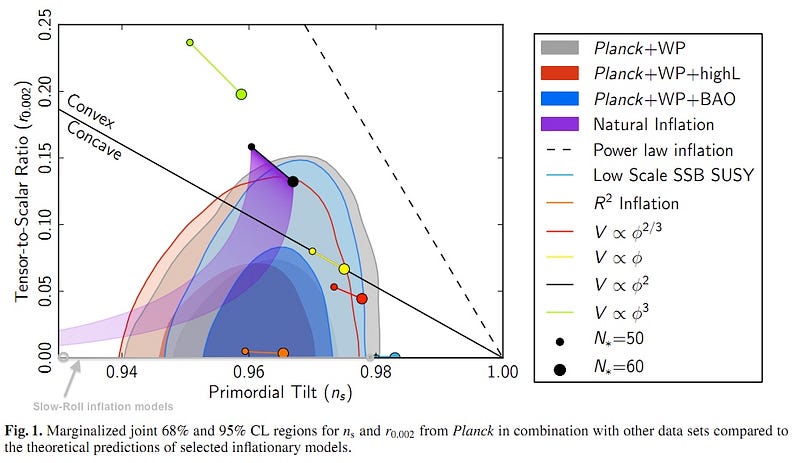
The big question, the one we’d love to be able to answer scientifically, is how?
How did inflation occur? One of the mind-numbing things about inflation — both its great power and its great mystery — is the fact that inflation wipes out any information that existed about the Universe before inflation. That’s right, except for the last 10^(-20)-to-10^(–36) seconds of inflation (depending on the exact model parameters you choose), we have zero information in our Universe today about what happened prior to that.
If we want to talk about what happened earlier, such as in earlier stages of inflation, hypothetically what (if anything) came before inflation, or what (if anything) caused inflation to start, we have to rely on theory alone at this point. There are those who throw up their hands and cry that this problem is insurmountable; I say let’s at least give credit where it’s due: to two ways we know it can work!
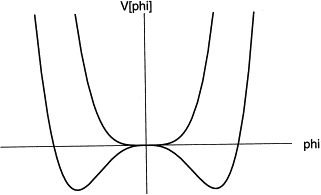
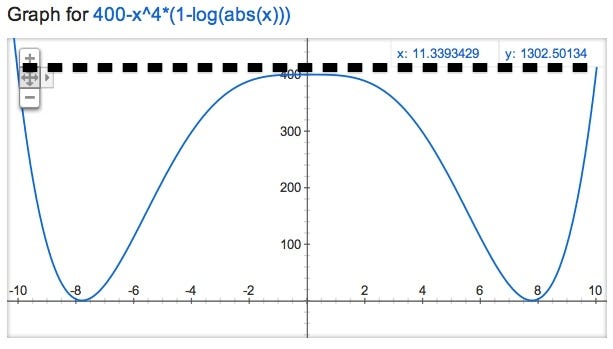
One is if the potential changed form as the Universe aged during inflation (above, left). There are plenty of potentials that do this in many branches of physics, particularly when the energy of a system drops over time. (Which is what happens in a matter/radiation-dominated, time-evolving Universe!) But this is not a given. What’s often cited as a far more likely possibility is to consider that, when the Universe was at a higher energy at an earlier time, different regions of space had different values of the potential, since they were indistinguishable. It’s sort of like if you flooded the graph, (above, right), with some type of fluid that filled it up to the dotted thick line.
In most regions, if the energy-level (the level of the dotted line) is allowed to drop, inflation won’t occur, or the wrong type of inflation will occur. You’ll get no inflation if you’re over the valleys, you’ll get the wrong type if you’re near the high edges, but you’ll get the right type if you’re near the center.
But are you likely to get the right type? Yes, yes you are. Here’s why.
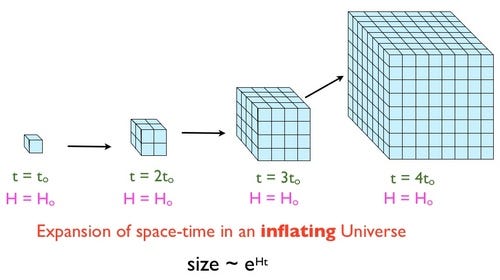
When a region of the Universe undergoes exponential expansion, it creates more Universe in every region that’s expanding exponentially. Regions that expand any other way get swamped. Here’s an example, if you start with a region of radiation-dominated spacetime with a certain amount of energy, the volume of space it takes up will grow, over time according to the sequence:
- 1, 2.8, 5.2, 8, 11.2, …
On the other hand, if that same region is inflation-dominated spacetime with the exact same amount of energy, then the volume of space it takes up grows according to this sequence:
- 1, 8, 64, 512, 4096, …
You can see that both sequences go to infinity, but one of them goes to infinity much faster than the other! So now let’s come back to our potential.
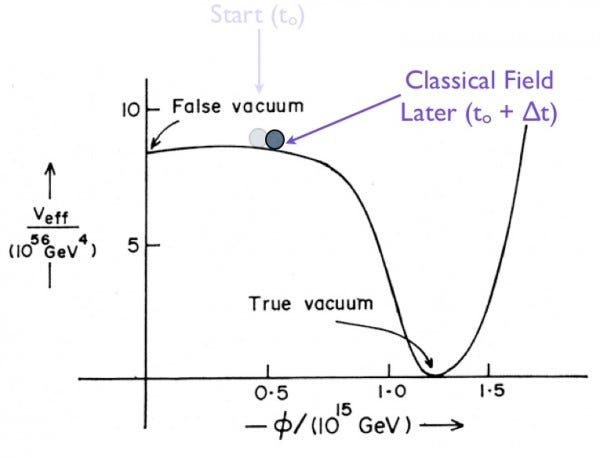
If you’re at the flat part of the potential, you roll down it slowly, so you spend more time there, so even if just a tiny, tiny fraction of your initial Universe starts over the flat part, after much, much less than even one second elapses, now 99.9+% of the Universe that exists after inflation exists where the slowly-rolling part of the potential was.
But that’s assuming inflation was a classical field, which I just told you it probably isn’t. It’s probably a quantum field. Which makes the story far more interesting.
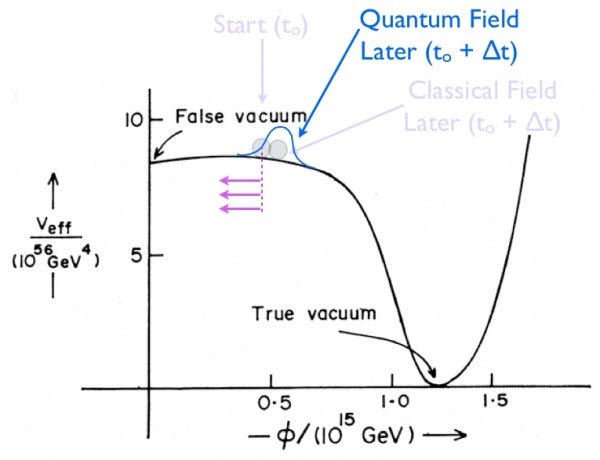
Because quantum fields spread out over time! This means that some of the new regions that get created, due to this quantum spreading effect, will actually have their inflaton field higher up on the flat part than they were before; this is the beauty of having a slowly-rolling, flat potential!
So inflation doesn’t just happen “more-likely-than-not” the way we think it should, inflation lasts an eternity, and 99.999999999…% of the regions of the Universe where inflation does end will look just like ours does!
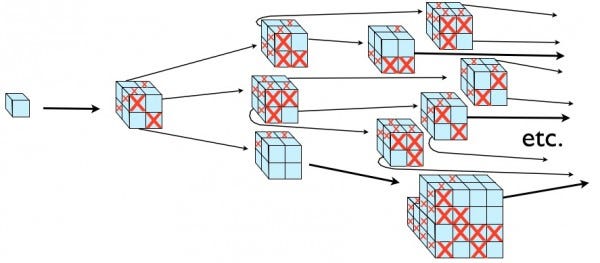
These things have some fun names: the idea that the field could have started anywhere (the diagram with the black, dotted line over the potential) is known as chaotic inflation, while the idea that the inflaton is a quantum field, spreading out, and will persist for an eternity, is known aseternal inflation. For those of you interested in the Nobel Prize politics, this is very likely why, if a Nobel is ever awarded for inflation, it will go to Alan Guth and Andrei Linde as the two theorists; Guth for inventing the idea, Linde for chaotic and eternal inflation developments, with perhaps (speculatively?) the P.I. of Planck getting the third slot.
What happened since the end of inflation, that we understand pretty well.
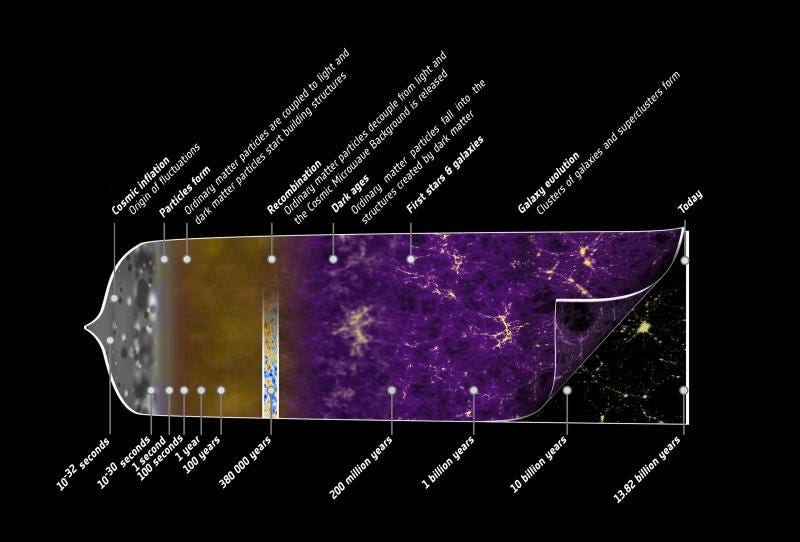
But did inflation truly exist for an eternity into the past? Was there a state before inflation? A singularity? A Bunch-Davies vacuum that inflation came from? The information to know the answers to those questions probably does not exist within our Universe.
For the time being, this is not only what we know, it’s all we think we can know. Whatever came before inflation — including all the information about how (or whether) inflation began — is wiped out in our Universe by the nature of inflation itself. The information in our Universe is finite, both in amount and in time. Whatever happened before may be forever lost to the past.
Leave your comments on our forum, and support Starts With A Bang on Patreon!


